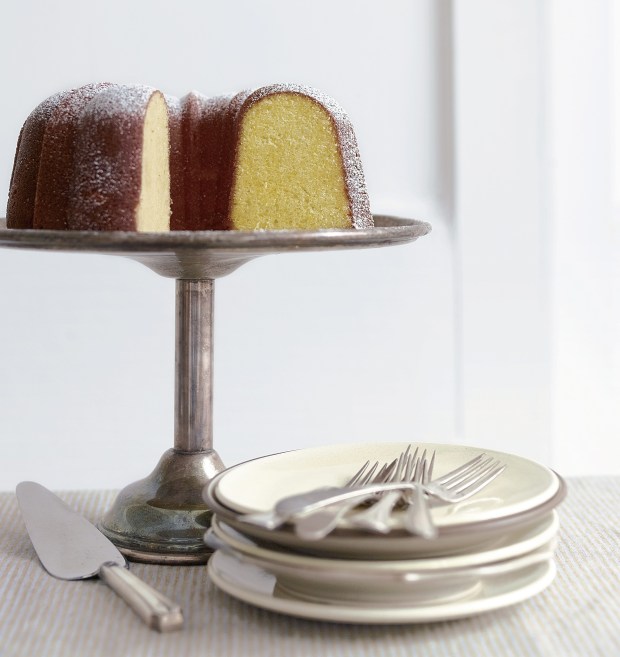When I lived in Lisbon, a few times a week I’d trudge up the hill from my apartment and pop into Papas for breakfast, perhaps one of the tiniest restaurants in the city. It seats a mere eight people, and that includes two at the counter. If it wasn’t open yet—for the Portuguese regard horarios (schedules) as nothing more than polite suggestions—I’d wait. My go-to breakfast was this dessert cake. It’s dense, moist, and deeply flavored, and (I’m not ashamed to say it) the servers tended to have a generous hand when cutting slices.
Atenção (Warning)—Make sure to use a light-colored Bundt pan. A dark one will turn out a cake that sticks and is unpleasantly brown. Since this cake only gets better with age, don’t even think about taking a bite until the day after you make it, or even the day after that.
Ingredients:
(serves 10 to 12)
Nonstick baking spray with flour
4 to 5 large navel oranges
3 ½ cups all-purpose flour
1 ½ tsp baking powder
1 ¾ tsp kosher salt
5 large eggs
3 cups granulated sugar
1 ½ cups mild extra-virgin olive oil
Confectioners’ sugar, for sprinkling
Preparation:
- Position a rack in the middle of the oven, remove any racks above, and crank up the heat to 350°F. Coat a 12-cup Bundt or tube pan with baking spray and set aside.
- Finely grate the zest of 3 of the oranges, then squeeze 4 of them. You should have 1½ cups of juice; if not, squeeze the fifth orange. Set aside.
- Whisk together the flour, baking powder, and salt in a large bowl and set aside.
- In the bowl of a stand mixer fitted with the paddle attachment, or with a handheld mixer in a large bowl, beat the eggs on medium-high speed until well combined, about 1 minute. Slowly pour in the granulated sugar and continue beating until thick and pale yellow, about 3 minutes. On low speed, alternate adding the flour mixture and oil, starting and ending with the flour, and beat until just a few wisps of flour remain. Pour in the orange juice and zest and whirl for a few seconds to bring the batter together.
- Pour the batter into the prepared pan and bake until a cake tester comes out with a few moist crumbs clinging to it, about 1¼ hours. If the top is browning too much as the cake bakes, cover lightly with foil. Transfer to a wire rack and cool for 15 minutes.
- Turn the cake out onto the rack and cool completely, then place it in a covered cake stand and let it sit overnight. Just before serving, dust with confectioners’ sugar.
Originally published in The New Portuguese Table: Exciting Flavors from Europe’s Western Coast by David Leite. Copyright © 2009 by David Leite. Photographs copyright © 2009 by Nuno Correia. Published by Clarkson Potter/Publishers, an imprint of Penguin Random House LLC.
